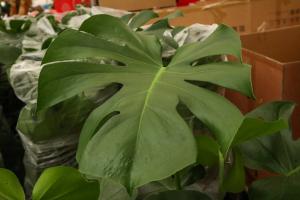Introduction
Mangrove plants are found in tropical and subtropical regions of the world, where they grow along the coastlines and estuaries. One of the most remarkable features of these plants is their ability to tolerate saltwater, which makes them unique among other types of vegetation. This article explores the mechanisms behind how mangrove plants can tolerate saltwater and what makes them so adapted to thrive in these harsh conditions.
Mangroves and Saltwater
Mangroves are well adapted to grow in saltwater as they have evolved several mechanisms to cope with the high levels of salinity in their environment. The main reason behind their salt tolerance is the presence of special salt-filtering cells in their roots, which allow them to absorb freshwater while blocking the entry of salt. In addition to this, the leaves of mangrove plants also have thick cuticles that prevent salt from entering their tissues. This combination of salt filtering and water uptake mechanisms helps mangroves survive in saltwater environments.
The Role of Pneumatophores in Mangroves
Pneumatophores are specialized aerial roots that grow from the stem of the mangrove plant and protrude above the waterline. These structures are an essential adaptation of mangroves to anaerobic (low oxygen) environments, which are common in saltwater habitats. Pneumatophores enable the plant to breathe by providing oxygen to the submerged roots and removing carbon dioxide. This adaptation ensures that the mangrove plant can survive in the low-oxygen conditions of the salty swampy areas.
Salt Secretion in Mangroves
Mangroves have another remarkable mechanism that enables them to deal with salt – salt secretion. These plants have special cells in their leaves that remove excess salt through the pores on the surface. The salt is then excreted on the surface of the leaves, where it forms a crust that is later shed. This process of salt secretion helps to maintain the salt balance in the plant and prevents toxic build-up, which would otherwise lead to stunted growth and death.
Conclusion
In conclusion, mangrove plants have evolved some remarkable mechanisms to survive in saltwater environments. These adaptations allow them to cope with the high levels of salinity, anaerobic conditions, and excess salt that are common in coastal regions. Studying these unique plants not only provides insights into the world of natural adaptations but also has implications for the conservation of mangrove ecosystems, which support diverse marine life and provide many significant benefits to humans.

 how many times do yo...
how many times do yo... how many planted tre...
how many planted tre... how many pine trees ...
how many pine trees ... how many pecan trees...
how many pecan trees... how many plants comp...
how many plants comp... how many plants can ...
how many plants can ... how many plants and ...
how many plants and ... how many pepper plan...
how many pepper plan...
































